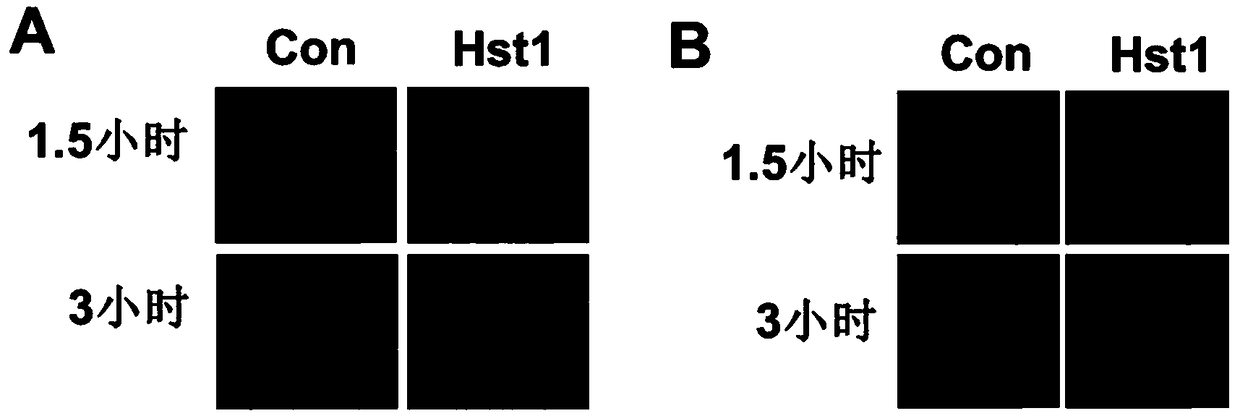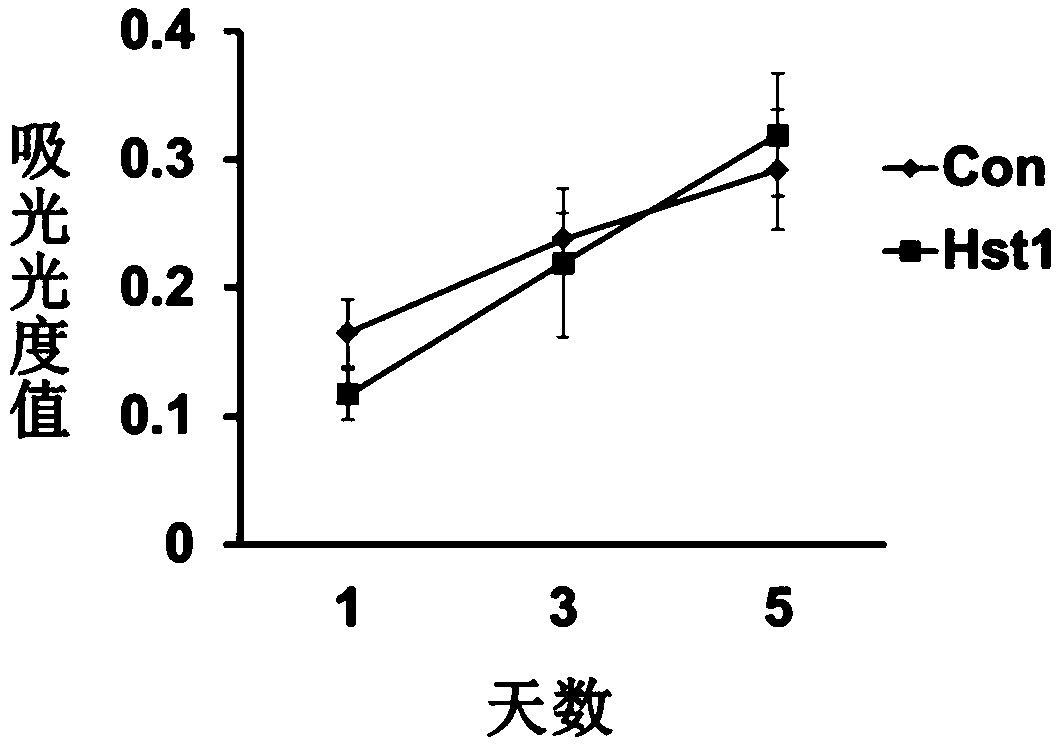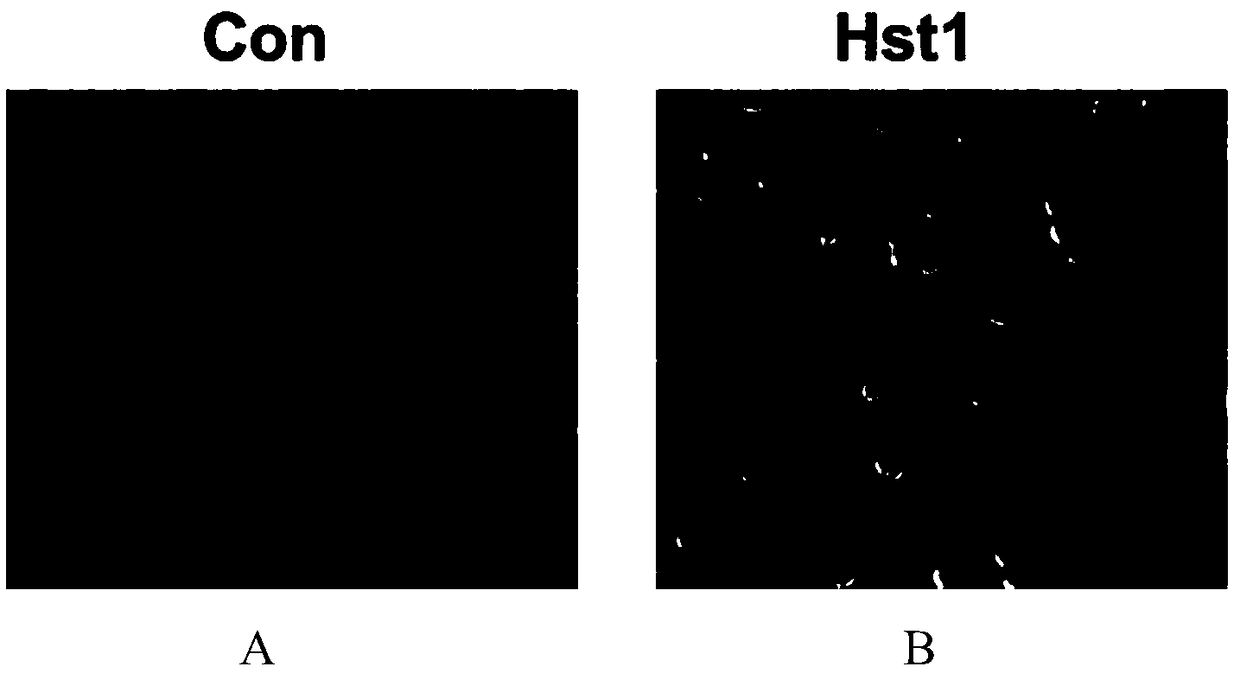Application of histatin 1 (Hst1) polypeptide in preparation of composite materials for promoting repair of large-area skin defects
A composite material, skin defect technology, applied in the field of biomedicine to achieve the effects of accelerating healing speed, inhibiting inflammatory response, good biocompatibility and biosafety
- Summary
- Abstract
- Description
- Claims
- Application Information
AI Technical Summary
Problems solved by technology
Method used
Image
Examples
Embodiment 1
[0062] Example 1: Research on the promotion of cell adhesion, extension and angiogenesis by Hst1 polypeptide
[0063] (1) Bone marrow mesenchymal stem cells (purchased from Cyagen Biosciences Inc (USA), batch number 170221I31) were inoculated in 96-well plates at a density of 5×10 per well. 3 Bone marrow mesenchymal stem cells (BMSCs) were added to 50 μl serum-free medium (a-MEM, Gibco) containing a final concentration of 10 μM Hst1 polypeptide, and the control group was pure serum-free medium (a-MEM, Gibco), cultured for 1.5 h, Phalloidin staining after 3h, observing cell adhesion and extension.
[0064] (2) BMSCs were seeded in a 96-well plate at a density of 5×10 per well 3 Add 50 μl of serum-free medium containing a final concentration of 10 μM Hst1 polypeptide to culture 1d (day), 3d and 5d, and then mix 90 μl of culture medium (a-MEM, Gibco) and 10 μl of CCK-8 solution at each time point (Nippon Dojin Chemical Co., Ltd.) was added to each well, and incubated again at 3...
Embodiment 2
[0074] Example 2: Research on Hst1 polypeptide promoting skin defect repair in rats
[0075] (1) Construction of a large-area skin defect model in SD rats
[0076] SD rats (5 in total, weighing 250-300 g, purchased from the Animal Experiment Center of Southern Medical University) were anesthetized by intraperitoneal injection of 3% (w / v) pentobarbital sodium, placed prone on the operating table, and fixed their limbs , back shaved, 1% (w / v) iodine sterilized towels. A skin puncher was used to make a circular full-thickness skin defect with a diameter of 5 mm on the dorsal side. Within 3 days after the operation, gentamicin (injection volume: 4 mg / kg) was injected daily to prevent infection, and carprofen (injection volume: 12.5 mg / kg) was injected every day. mg / kg) for analgesia, and normal feeding in separate cages.
[0077] (2) Repair of skin defect in rats by Hst1 polypeptide
[0078] Using SD rats as their own control, one side is the experimental group, implant the pre...
Embodiment 3
[0082] Example 3: Hst1 polypeptide-loaded thiolated chitosan hydrogel promotes skin defect repair in rats
[0083] (1) The preparation method of the thiolated chitosan hydrogel loaded with Hst1 polypeptide is the same as that in Example 1.
[0084] (2) Repair of rat skin defects by thiolated chitosan hydrogel loaded with Hst1 polypeptide
[0085] Adopt SD rat (model construction method is the same as embodiment 1) self control, one side is experimental group, injects the hydrogel of loading Hst1 polypeptide thiolated chitosan, the hydrogel of loading Hst1 polypeptide thiolated chitosan (per case Skin defect injection (40ul hydrogel) was injected into the skin defect (Ф=5mm) of SD rats; the other side was the control group; the control group (Con) received no special treatment. The result is as Figure 5 As shown, it shows that the thiolated chitosan loaded with Hst1 polypeptide can obviously promote skin repair.
PUM
| Property | Measurement | Unit |
|---|---|---|
| concentration | aaaaa | aaaaa |
| diameter | aaaaa | aaaaa |
| height | aaaaa | aaaaa |
Abstract
Description
Claims
Application Information
 Login to View More
Login to View More - R&D
- Intellectual Property
- Life Sciences
- Materials
- Tech Scout
- Unparalleled Data Quality
- Higher Quality Content
- 60% Fewer Hallucinations
Browse by: Latest US Patents, China's latest patents, Technical Efficacy Thesaurus, Application Domain, Technology Topic, Popular Technical Reports.
© 2025 PatSnap. All rights reserved.Legal|Privacy policy|Modern Slavery Act Transparency Statement|Sitemap|About US| Contact US: help@patsnap.com



